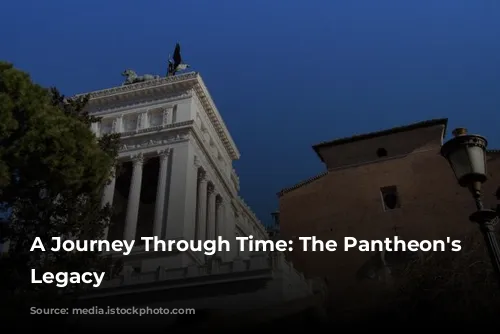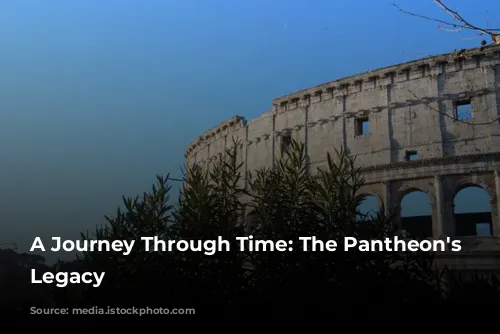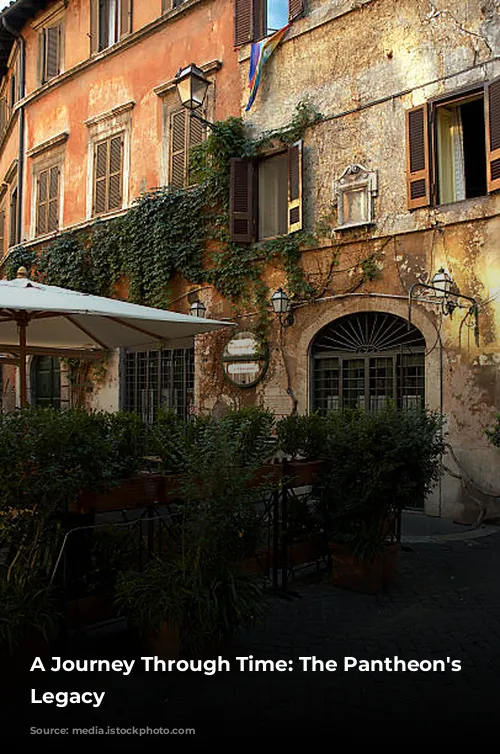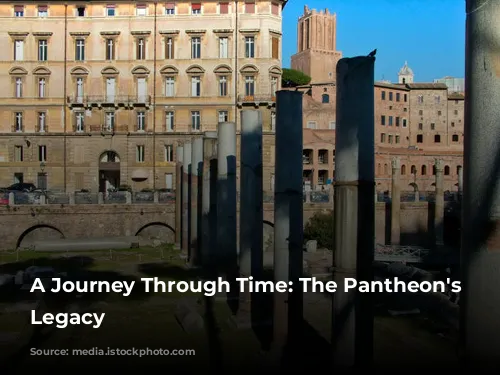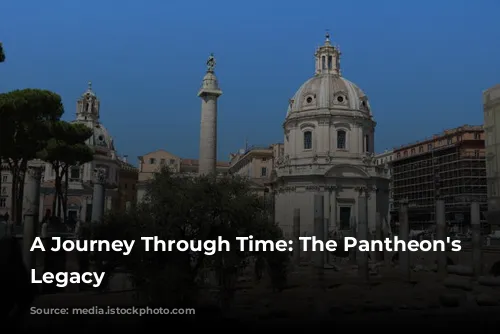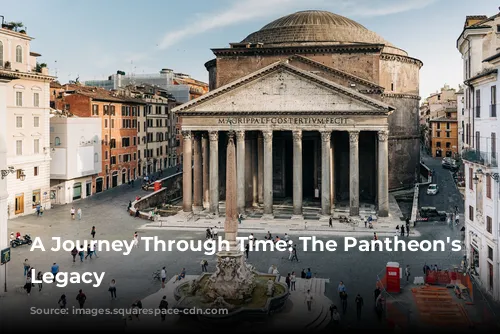The Pantheon, a magnificent structure perched in the heart of Rome, is more than just a temple; it’s a testament to the indomitable spirit of human creativity. Standing proudly for centuries, its presence echoes the grandiosity of ancient Rome, a civilization that thrived on innovation and ingenuity.
At the pinnacle of this awe-inspiring dome lies the oculus, a circular opening spanning 30 feet. This ‘eye to the heavens’ acts as the sole source of natural light within the temple, bathing its interior in a celestial glow. It’s not just a conduit for light; the oculus symbolizes the deep connection the Romans held with their gods, a connection that intertwined with their lives.
Beyond its symbolic meaning, the oculus serves a practical purpose. Its ingenious design helps to reduce the weight of the dome, demonstrating the remarkable architectural prowess of the Romans. Their ability to blend aesthetic beauty with practical functionality is a testament to their engineering brilliance.
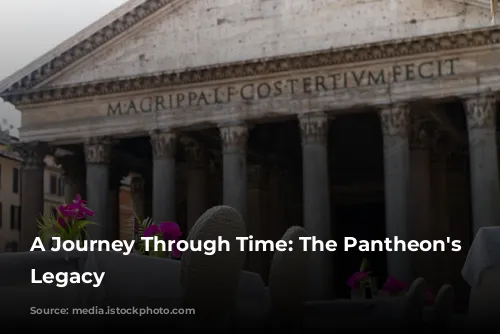
A Canvas of Roman Civilization
The Pantheon, however, is more than just an architectural marvel. It stands as a canvas that captures the might and sophistication of Roman civilization, a crucible of groundbreaking innovations in culture, law, and technology. The Romans laid the groundwork for the modern world, with their intricate legal systems, advanced road networks, and remarkable engineering feats.
The Pantheon, in this context, is a living museum, a space where you can truly feel the pulse of ancient Rome. It’s a reminder of a civilization that valued legacy, innovation, and the integration of the human with the divine.
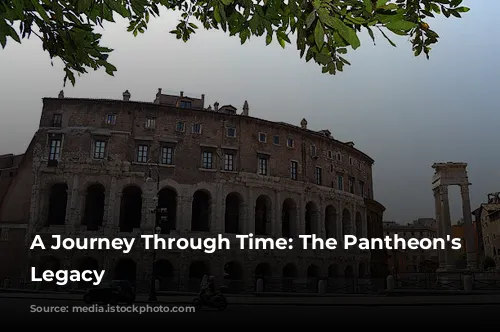
A Beacon of Hope for Future Generations
In a world that is constantly changing and often forgets the past, the Pantheon stands as a poignant reminder of the enduring power of human creativity and ambition. It challenges us to ponder our own legacies: what are we building that will withstand the test of time? How are we pushing the boundaries of our fields?
The Pantheon’s influence extends beyond its architectural grandeur. It embodies what humanity can achieve with vision and perseverance. In a world transformed by technology, the Pantheon reminds us that some of the greatest achievements are born from simple ideas, executed with precision and passion.
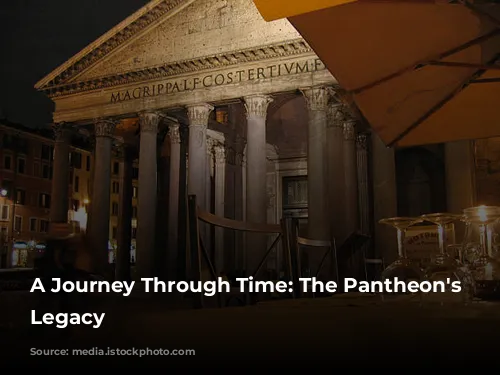
A Timeless Symbol of Roman Glory
Today, the Pantheon continues to enchant millions of visitors from around the world, its power to evoke wonder and admiration undiminished. It remains a potent symbol of Rome’s past glory and a source of inspiration for present and future generations.
As you step through its colossal bronze doors, you’re stepping into a space where history resonates with every step. The Pantheon is not just a monument to visit; it’s an experience to be felt, a space where art, architecture, history, and spirituality converge to create something truly transcendent.

A Beacon of Hope for Future Generations
The Pantheon in Rome is not merely a relic of the past; it’s a beacon that continues to shine, illuminating the brilliance of human achievement. Its mystifying allure lies in its ability to connect us to a time when the impossible was made possible, when art and architecture were vehicles for showcasing the greatness of an empire.
As we navigate our modern lives, the Pantheon stands as a reminder of the unyielding human spirit, urging us to strive for greatness, to build legacies that will endure the test of time, and to remember that in our quest for the future, we must never forget the lessons of the past.

A Journey Through Time
The Pantheon is more than just a destination; it’s a journey through time, a journey that reminds us of the incredible feats humanity is capable of achieving. In the heart of Rome, this ancient marvel continues to mystify, inspire, and remind us of the indomitable spirit of human creativity.
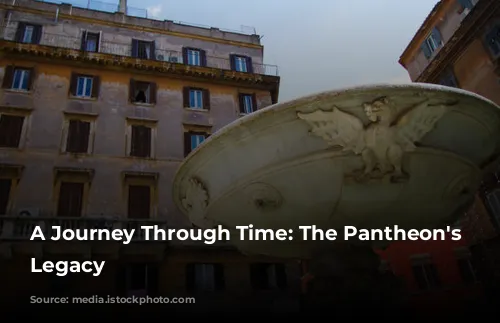
Planning Your Visit to the Pantheon
When planning a trip to Rome to witness the magnificence of the Pantheon, there are a few key points to consider to make the most of your experience:
-
Timing Your Visit: The Pantheon is open to the public every day, but hours vary depending on the season. It’s advisable to check the current opening times before your visit. Early mornings or late afternoons are usually less crowded, offering a more intimate experience with this ancient marvel.
-
Entrance Fees and Tours: The Pantheon is free to enter, which is a rarity for monuments of this stature in Rome. Guided tours are available, offering insightful historical contexts and anecdotes that bring the ancient structure to life. These tours can be booked online or on-site.
-
Photography Tips: For those keen on photography, the changing light through the oculus creates a dramatic effect inside the Pantheon, especially during midday when the sun is directly overhead.

Where to Stay Near the Pantheon
